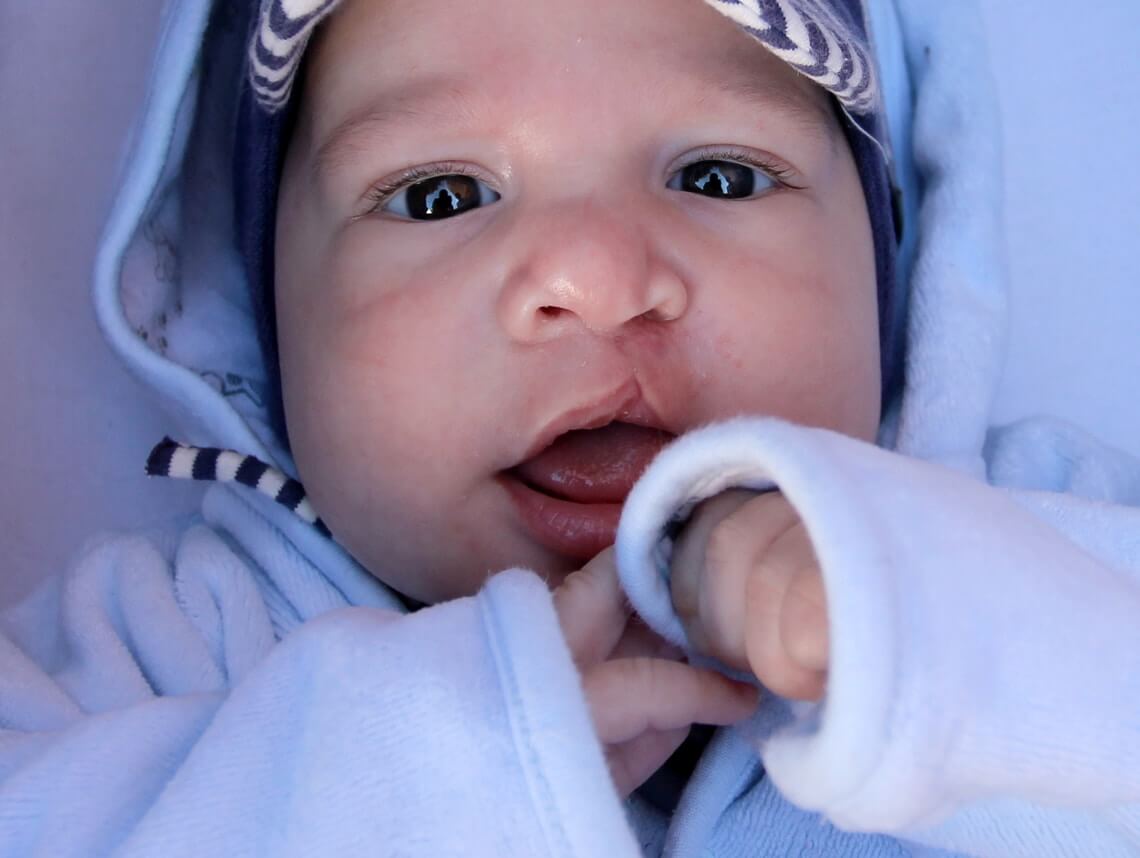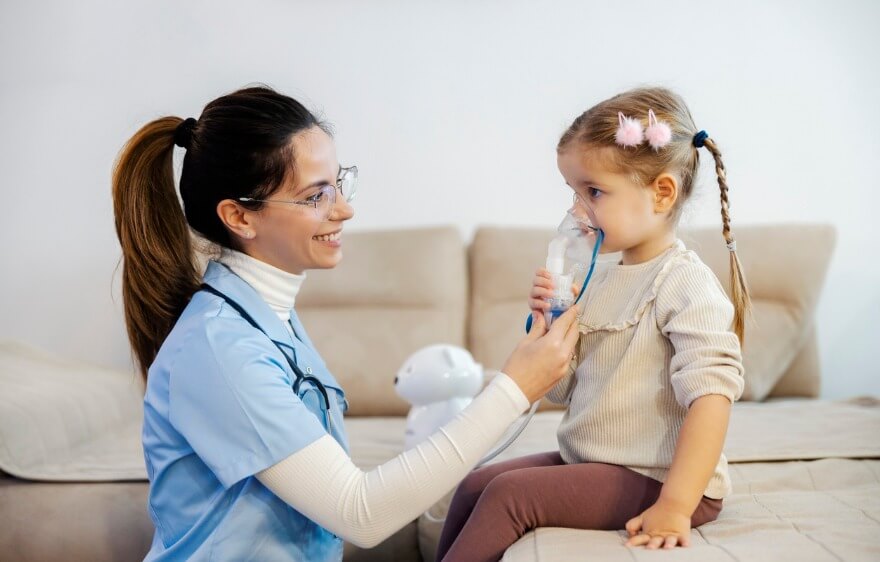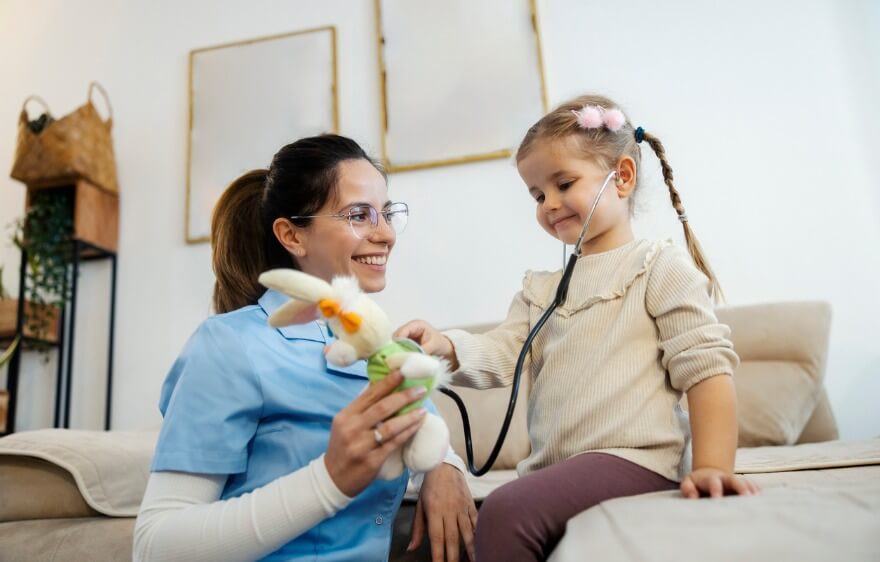Finding out you’re having a baby can be overwhelming and exciting. You schedule prenatal care, pick out names, and decorate a baby room. Everyone’s waiting to meet your little one, and you give them updates and pictures of sonograms as the pregnancy moves along. But, what happens when your doctor mentions that there may be something wrong with your baby’s development? Such news can be devastating and leave you wondering how to move forward. That can be the case with a cleft lip and/or a cleft palate. And, while they’re not life-threatening conditions, they can certainly affect your child’s life. What, exactly does it mean to have a cleft lip or palate? Are there any complications? And, what are the best forms of treatment?
What’s the difference between a cleft lip and a cleft palate?
A cleft lip is a birth defect that occurs when a baby’s lips do not form properly while in utero. At the beginning of the second trimester of pregnancy, tissue joins together to form the baby’s face. Sometimes, this tissue fails to fully join at the upper lip, resulting in a gap. The width of this gap may vary between a barely perceptible slit to a wide opening that reaches up to the baby’s nose. The condition can also vary in severity — in some babies, the malformation may occur only on one side of the lip, while other babies may be born with a gap on both sides of the upper lip.
A cleft palate refers to a gap on the roof of the baby’s mouth. This part of the body also forms during the second trimester of pregnancy. Just as with cleft lips, the extent of the opening may vary — from only one side of the palate to running all the way from the front to the back. Both cleft lips and cleft palates are the most common birth defects.
Complications from a Cleft Lip or Cleft Palate
A cleft lip or palate often causes difficulties when the baby tries to eat, and as the baby grows up, it can make it difficult to speak. Children with a cleft lip or palate are also prone to experience ear infections and hearing problems. This is due to the abnormal position of facial muscles, which can affect the eustachian tube (a canal between the ears and the back of the throat and nose). If the size of the gap is significant, it may also affect tooth development.
It’s important to note that children with a cleft lip or palate often experience emotional issues due to how peers may respond to their physical appearance. As a result, the condition may have an impact on the child’s psychological health.
Symptoms of a Cleft Lip or Cleft Palate
In most cases, a cleft lip or palate will be apparent at birth. However, for those that aren’t as easily identifiable, look for the following signs:
- An opening in the roof of the mouth that’s not noticeable by looking at the baby
- A small line that extends from the lip to the nose
- Chronic ear infections
- Difficulty swallowing
- Food and liquids come out of the nose
Risk Factors for a Cleft Lip or Cleft Palate
While the exact causes of a cleft lip or cleft palate are unknown, there are certain risk factors. These include:
- Smoking or consuming alcohol during pregnancy
- Using certain medications during pregnancy
- Diabetes of the mother
- Obesity of the mother
- Environmental factors
- Family history
Diagnosis and Treatment for a Cleft Lip or Cleft Palate
A cleft lip or palate doesn’t require specific tests to diagnose them. They are apparent from a visual inspection. In addition, if the baby has a cleft lip, your OB-GYN may notice it during regular ultrasounds (it may be harder to detect a cleft palate while the child is still in the womb). Common treatments may involve:
1. Feeding Techniques
If your child has either a cleft lip or palate, the pediatrician can guide you through several feeding options, such as using a special bottle, learning about properly positioning the bottle’s nipple, and feeding your baby in a sitting position to prevent the milk from reaching the back of their nose. In addition, babies with a cleft lip or palate should be burped more often. This is because the gap can allow more air into their bodies while they’re being fed. You’ll also be instructed about how to track your baby’s weight to ensure they are receiving proper nutrition.
2. Corrective Surgery
Both a cleft lip and a cleft palate can be corrected via surgery. These are helpful in correcting your baby’s appearance, as well as restoring the normal function of their lips and palates so that they can eat and speak better. In addition, they can be performed with minimal scarring. If the child has a cleft lip, the surgery can be done within three and six months of age. If the child has a cleft palate, the surgery is typically done when the child is around a year old. It’s also possible to require follow-up surgeries.
3. Speech Therapy
Some children do not undergo corrective surgery as babies. When such is the case, they’ll likely need speech therapy to help the child articulate correctly and use good pressure when producing certain sounds. This is done through different therapy techniques. The speech therapist will work with your child at each appointment as well as give you instructions for you and any additional caregivers to continue the work at home.
4. Orthodontics
Since a cleft lip and palate can interfere with the formation of your child’s teeth, proper dental care and orthodontics can help restore the functionality of the teeth, as well as improve oral health and aesthetics. This type of treatment is done in stages and is lengthy — often starting during childhood and continuing through the child’s late teens.
5. Hearing Aids
Children with a cleft lip or palate are prone to fluid build-up in the ear. This results in chronic ear infections, and eventually, could lead to hearing loss. A way to prevent this from occurring includes installing tubes in the eardrums that are designed to aid in fluid drainage. In addition, it’s crucial to have your child’s hearing tested regularly.
Contact Care Options for Kids for Home Health Care
It can be hard to balance your time between work, home, and caring for a child. That’s why our team of professionals at Care Options for Kids is here to help.
Our home health care services offer support in the comfort of your home. We refer loving and competent nurses to provide customized care for families — from a few hours a day to around-the-clock supervision. Contact us directly to speak with a home health care professional or request a free in-home assessment. Together we can determine the best plan of action to keep your loved ones happy and healthy.
If you or a loved one are considering Pediatric Home Health Care Services, contact the caring staff at Care Options for Kids. Call today at (888) 592-5855.






